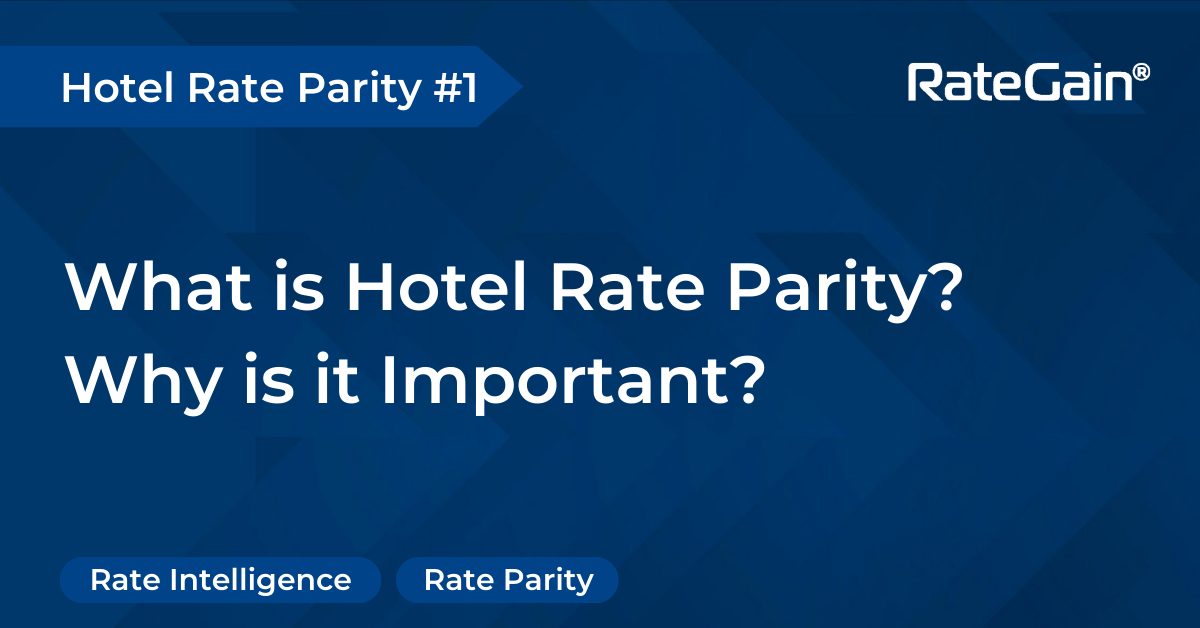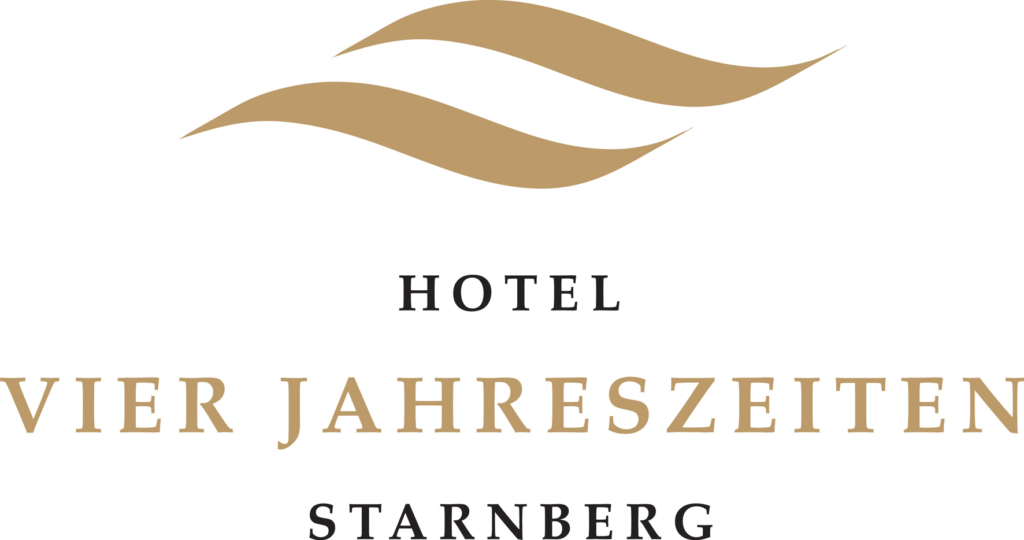In the dynamic and competitive landscape of the hotel industry, maintaining consistent pricing across various distribution channels is crucial for hoteliers. This is where the concept of hotel rate parity comes into play. Rate parity refers to the practice of offering the same room rates and terms across all distribution channels.
However, to be able to use it to your advantage, it is important to understand the intricacies of rate or price parity and why it is integral to maintain an upper hand in the everlasting fight to boost bookings and guest experience.
What is Hotel Rate Parity?
Rate parity, also known as price parity, is the practice of ensuring that the room rates offered by a hotel are consistent across all distribution channels. It means that whether a potential guest books directly through the hotel’s website, a third-party online travel agency (OTA), or any other distribution partner, the rates should be identical. Rate parity extends beyond the room rates and includes terms and conditions, availability, and booking policies.
The purpose of rate parity is to create a level playing field for all distribution channels and avoid price discrepancies that could lead to customer confusion or dissatisfaction. And it is is essential for maintaining fairness, brand integrity, and customer trust in the hotel industry.
What is the Importance of Rate Parity?
Rate parity holds significant importance in the hotel industry for several reasons. Let’s explore why it is crucial for hotels to maintain rate parity across their distribution channels:
-
-
Fairness and Consistency
Rate parity ensures fairness and consistency in pricing for all customers, regardless of the channel through which they make a reservation. It eliminates price discrimination and ensures that guests receive the same rate regardless of where they book. This fosters trust among customers and enhances their confidence in the hotel’s pricing integrity.
-
Avoiding Brand Dilution
Maintaining rate parity helps protect the hotel’s brand image and reputation. When rates vary widely across different channels, it can create confusion and dilute the hotel’s brand perception. Consistent pricing across channels reinforces the hotel’s value proposition and avoids any negative impact on brand equity.
-
Eliminating Customer Frustration
Inconsistent pricing can lead to customer frustration and a sense of unfairness. Guests who discover a lower rate on one channel after booking through another may feel deceived or cheated. Rate parity ensures that customers feel confident in their booking decisions, knowing they are getting the best available rate ane the right pricing regardless of the booking channel.
-
Preventing Channel Conflict
Rate parity helps prevent channel conflict and maintains healthy relationships with distribution partners. When rates are not aligned, it can create tension between the hotel and its online travel agency (OTA) partners, leading to strained partnerships and potential loss of business. Maintaining rate parity promotes collaboration and a mutually beneficial working relationship with distribution partners.
-
Maximizing Revenue and Direct Bookings
Rate parity allows hotels to optimize revenue and prevent revenue leakage. When rates are consistent across channels, guests are less likely to shop around extensively, increasing the likelihood of direct bookings. By driving direct bookings, hotels can reduce distribution costs associated with commissions paid to third-party channels and retain more revenue.
-
Enhancing Rate Management Efficiency
Managing rates across multiple channels can be complex and time-consuming. Rate parity simplifies rate management processes by providing a standard pricing structure that can be easily monitored and updated. This improves operational efficiency and reduces the risk of errors or discrepancies in pricing.
-
Regulatory Compliance
-
Rate parity has gained regulatory attention in some jurisdictions. Regulatory bodies have implemented rules and regulations to ensure fair competition and prevent anti-competitive practices. Adhering to rate parity requirements helps hotels comply with these regulations and avoid potential legal issues or penalties.
By ensuring consistent pricing across all distribution channels, hotels can optimize revenue, strengthen partnerships, and provide a positive booking experience for their guests. Embracing rate parity as a strategic approach is crucial for long-term success in the dynamic and competitive hospitality landscape.
Is Rate Parity a Good or a Bad thing?
Rate parity has been a subject of debate within the hotel industry. Some argue that rate parity helps maintain fairness and prevents rate undercutting among distribution channels. It ensures a consistent brand image, prevents customer confusion, and fosters healthy competition among online platforms. On the other hand, critics argue that rate parity limits hoteliers’ pricing flexibility, stifles competition, and increases dependency on OTAs.
What are the Challenges in Maintaining Rate Parity?
Maintaining rate parity poses several challenges for hoteliers.
-
Dynamic hotel market
One of the primary challenges is the dynamic nature of the hotel market, with rates constantly fluctuating based on demand, seasonality, and other factors. Hoteliers need to ensure that changes in rates are promptly reflected across all channels to avoid rate disparity.
-
Managing multiple channels
Managing multiple distribution channels simultaneously, each with its own extranet or connectivity requirements, requires robust technology and efficient processes to update rates and availability in real-time. This poses additional challenge for the hoteliers.
-
Price cutting by OTAs
More often than not, OTAs are allowed to reduce their own commission; thereby offering lower prices. As OTAs start getting a lion’s share of the bookings, hotels tend to lose out on revenue.
-
Increasing direct bookings
Direct bookings are pivotal to boost the revenue share. This requires hotels to level-up their digital marketing — particularly metasearch marketing efforts.
One obvious solution that comes to the mind is to exclude entire rooms from OTAs’ listings. However, this poses the risk of having unsold room inventory.
How to Turn Rate Parity to Your Advantage?
While rate parity ensures consistent pricing across distribution channels, it doesn’t mean that hotels can’t leverage this concept to their advantage. Here are some strategies to maximize the benefits of rate parity and differentiate your hotel from online travel agencies (OTAs):
-
-
Provide More Value Than OTAs
While OTAs may offer competitive rates, hotels can set themselves apart by providing additional value-added services and perks. Focus on enhancing the guest experience by offering exclusive amenities, personalized services, loyalty programs, or special packages. Highlight these unique selling points on your website and marketing materials to entice guests to book directly with your hotel.
-
Market to Specific Audiences
Instead of solely relying on general marketing campaigns, tailor your marketing efforts to specific audiences. Identify niche markets or target segments that align with your hotel’s unique offerings and value proposition. By understanding the needs and preferences of these audiences, you can craft personalized messages and promotions that resonate with them. This targeted approach can attract guests who value the distinct experience your hotel provides, increasing direct bookings.
-
Read More: How do Hotels Distribute Inventory to Drive Bookings
-
Use Metasearch Websites
Metasearch websites aggregate rates from various sources, including OTAs and hotel websites, allowing users to compare prices in one place. By participating in metasearch advertising, you can ensure your hotel appears alongside OTA listings, maintaining rate parity while increasing visibility. Optimizing your presence on metasearch platforms through competitive bidding, attractive visuals, and compelling descriptions can drive direct bookings and minimize reliance on OTAs.
-
Improve the Booking Process
Streamline and optimize your hotel’s online booking process to provide a seamless and user-friendly experience. Invest in a modern and intuitive booking engine that allows guests to easily navigate through the reservation process, customize their stay, and receive instant confirmation. Implement features like live chat support or virtual concierge services to address any concerns or queries promptly. A hassle-free booking process encourages guests to book directly, knowing they can easily secure the best available rate without any complications.
-
Use a Channel Manager
A channel manager is a powerful tool that can help you effectively manage rates and inventory across multiple channels in real time. By using a channel manager, you can efficiently update rates, availability, and restrictions across all channels simultaneously, ensuring rate parity at all times. Additionally, a channel manager enables you to make data-driven decisions, monitor performance, and adjust strategies based on market demand and competitor analysis. This level of control and flexibility can enhance revenue management and minimize rate disparities.
By leveraging these strategies, hotels can optimize their direct booking potential while adhering to rate parity requirements. Remember, building strong relationships with guests and providing exceptional experiences are key to fostering loyalty and encouraging repeat visits, further reducing dependence on OTAs.
How can Hotels Manage Rate Parity Seamlessly?
Hoteliers can adopt certain techniques and strategies to effectively manage rate parity.
-
-
Never agree to Channel Specific Promotions
To maintain rate parity, it’s crucial not to offer exclusive promotions or discounts through specific channels. This practice can create rate disparities and harm your relationship with other distribution partners. Instead, focus on providing consistent rates and value-added benefits across all channels to ensure a fair playing field for all distribution partners.
-
Clarify your Policies
Clearly communicate your rate parity policies to all distribution partners and ensure they understand the expectations. Outline the consequences of rate disparities and emphasize the importance of maintaining consistent rates. Regularly review and update your agreements with distribution partners to ensure everyone is aligned with your rate parity strategy.
-
Think of the Long-term Sales Strategy
Rate parity should be viewed as part of your long-term sales strategy rather than a short-term tactic. Consider the potential impact on your brand reputation and relationships with distribution partners. Building trust and maintaining strong partnerships can result in better negotiating power and more favorable terms in the future.
-
Advertise the Benefits of Direct Bookings
Educate your potential guests about the benefits of booking directly with your hotel. Emphasize advantages such as best price guarantee, exclusive offers, loyalty program perks, and personalized services. Highlight these benefits on your website, social media channels, and marketing campaigns to encourage guests to book directly, reducing reliance on OTAs and minimizing rate disparities.
-
Reward Loyal Guests
Implement a robust loyalty program to incentivize guests to book directly and establish a sense of loyalty. Offer exclusive rewards, discounts, room upgrades, or additional amenities for repeat bookings or direct bookings. By recognizing and rewarding loyal guests, you can encourage them to bypass OTAs and book directly, fostering rate parity and building customer loyalty.
-
Invest in your Website
Ensure that your hotel website is user-friendly, visually appealing, and optimized for direct bookings. Provide a seamless booking experience with clear rate information, intuitive navigation, and secure payment options. Invest in professional website design, mobile responsiveness, and fast loading times to enhance the user experience and encourage direct bookings.
-
Read More: Why Ease of Use is the Core of any Booking Engine?
-
Monitor your Rates
Regularly monitor your rates across all distribution channels to identify any discrepancies or potential rate violations. Utilize rate shopping tools and analytics to track your rates and compare them with competitors. If you detect any inconsistencies, address them promptly with the respective distribution partners to rectify the situation and maintain rate parity.
-
Negotiate Favorable Terms
When entering into agreements with OTAs and other distribution partners, negotiate favorable terms that support your rate parity objectives. Seek agreements that allow you to manage your rates independently, provide flexibility in pricing strategies, and ensure fair competition among distribution partners. By having favorable terms in place, you can better manage rate parity while maximizing your revenue potential.
By implementing these techniques, hotels can effectively manage rate parity and minimize rate disparities across various distribution channels. Consistency, transparency, and a proactive approach are key to maintaining rate parity and optimizing direct bookings. Remember, rate parity not only benefits the hotel industry as a whole but also fosters fair competition and enhances guest trust and satisfaction.
How to Build Your Rate Parity Strategy?
Creating a comprehensive rate parity strategy is crucial for hotels. It starts with a thorough analysis of the distribution landscape, identifying key distribution partners, and understanding their requirements. Developing clear and standardized rate and inventory management policies that align with the hotel’s overall revenue strategy is essential. Regular audits and monitoring of distribution channels for rate parity compliance should be conducted to ensure consistency. Collaborating closely with distribution partners and negotiating favorable terms can also contribute to effective rate parity management.
Ultimately, hotel rate parity fosters fairness and trust among customers, eliminates confusion, and promotes healthy competition in the online marketplace. With the right strategies and tools in place, hoteliers can seamlessly manage rate parity, enhance their brand reputation, drive direct bookings, optimize revenue, and achieve long-term success in the competitive hotel industry.
If you wish to embrace rate parity and implementg the right strategies and tools to counter rate parity, book a live demo now.
Further Read: 8 Easy Tips for Hotel Revenue Managers to Cope With Rate Parity Issues
 Deutsch
Deutsch Português
Português Italiano
Italiano Espanol
Espanol čeština
čeština ไทย
ไทย Français
Français


